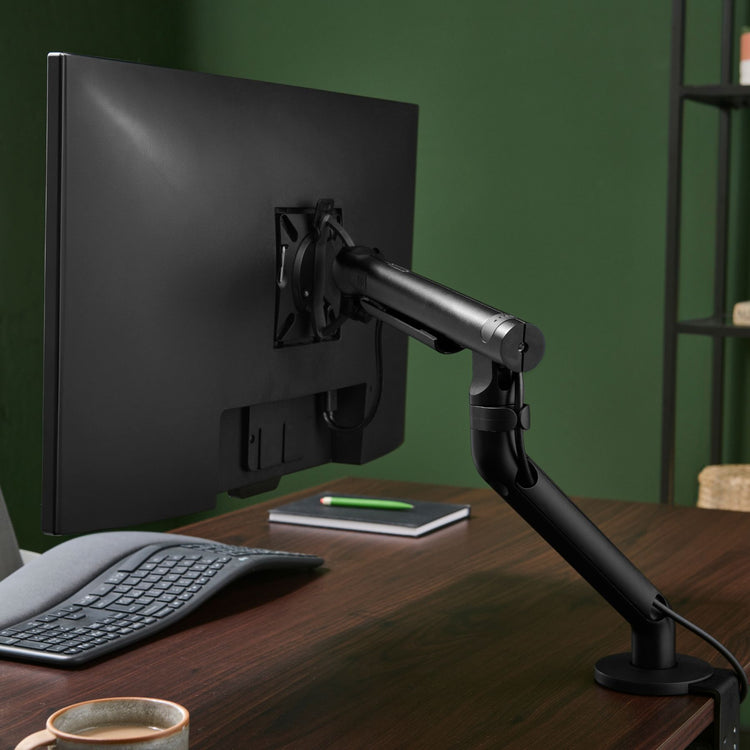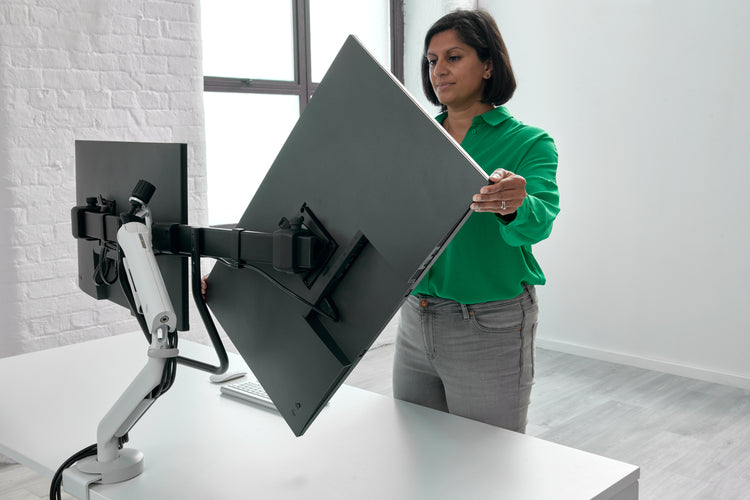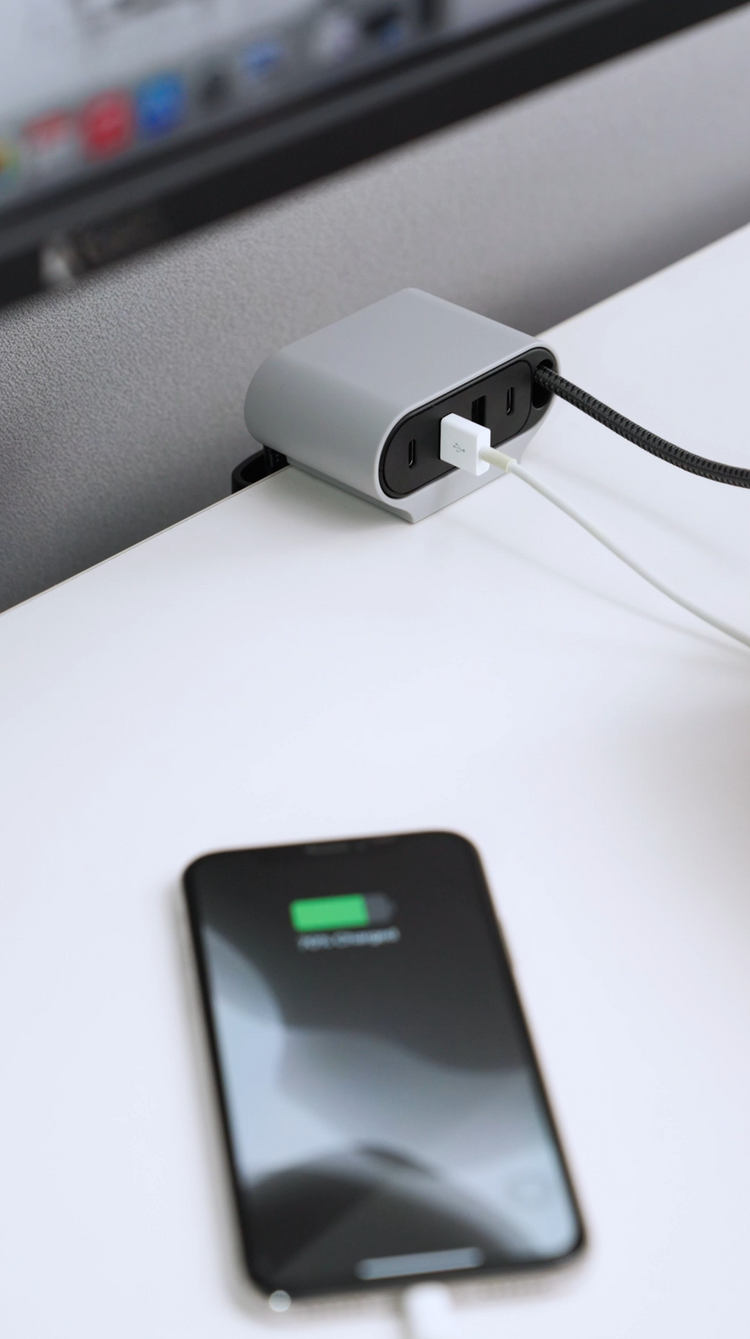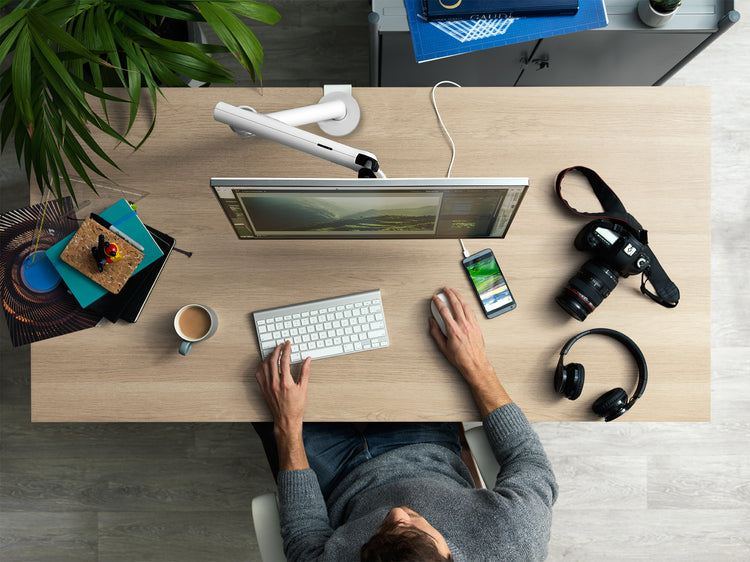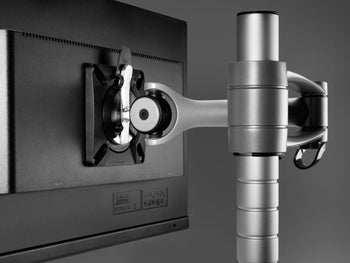Celebrating 25 Years of Innovation: The Wishbone Monitor Arm Legacy
July 2, 2025
In the heart of London's iconic Barbican Conservatory, surrounded by lush tropical plants and architectural brutalist beauty, industry leaders, design enthusiasts, and ergonomics experts gathered this past February to celebrate an extraordinary milestone. The Wishbone monitor arm marked its 25th anniversary, honoring a product that has quietly revolutionized workspaces across the globe through its testament to enduring design excellence.
Watch the highlights of the milestone event.
A Quarter-Century of Sustainable Design Through Longevity
The Wishbone story transcends simple product success; it demonstrates how true sustainability emerges through exceptional longevity. When Colebrook Bosson Saunders (CBS) introduced the Wishbone monitor arm 25 years ago, they created something revolutionary: a product that has lasted decades rather than years.
While sustainability discussions often focus on materials and manufacturing processes, Wishbone demonstrates a different approach entirely. The most sustainable product never needs replacing. By creating monitor arms that function flawlessly over and over again, CBS has prevented countless products from entering landfills and reduced the environmental impact of constant replacement cycles.
The Wishbone monitor arm stands as the original, award-winning flat screen monitor arm, and its extraordinary longevity sets the gold standard of sustainable design. While products in this industry often become obsolete within years, Wishbone has maintained its relevance for over two decades, proving that when designers create products with human use in mind, longevity is built-in.
Longevity as Environmental Responsibility
The anniversary celebration showcased remarkable stories of sustainability in action. Industry professionals shared experiences of working with Wishbone arms from their introduction around 2001 and 2002 – the same products that companies still rely on today. Rather than requiring complete replacements, these installations needed only occasional additions, demonstrating how quality design reduces environmental waste.
This approach represents a paradigm shift in thinking about sustainability. The environmental mathematics compel attention: one Wishbone monitor arm that lasts 25 years prevents the manufacture, transportation, and disposal of potentially dozens of lesser products. This represents sustainability through superior engineering, where longevity becomes the ultimate environmental statement.
Where Form Truly Meets Function and Responsibility
The philosophy behind CBS aligns perfectly with sustainable principles: solve real workplace problems while helping people achieve optimal tech wellness. The Wishbone exemplifies this approach, blending high-precision engineering with design minimalism to create workplace solutions that endure.
CBS consistently focuses on creating products that ensure users receive the best ergonomic support when working with screens and technology. This extends beyond mere adjustability; it involves understanding that truly sustainable products must serve human needs so effectively that replacement becomes unnecessary.
A Legacy Built on Endurance
CBS brings a distinguished history to the ergonomics field, having collaborated with renowned design names like Sottsass and Olivetti on pioneering ergonomic studies. From conducting the first ergonomic studies to developing the original Gemini arm, the company has consistently demonstrated that good design and environmental responsibility work hand in hand.
This heritage of innovation carries through to every CBS product today, demonstrating a meticulous approach to design that prioritizes performance and longevity above short-term trends. The Wishbone stands as the most enduring example of this philosophy: a product where thoughtful design meets adaptable technology, engineered to last decades.
The dedication to quality and longevity represents more than business philosophy; it embodies environmental stewardship through superior design.
Timeless Relevance: The Ultimate Sustainability Test
The most telling testament to Wishbone's sustainable design philosophy lies in how the product launched 25 years ago yet remains entirely relevant today. Despite dramatic changes in screen technology, workplace design trends, and ergonomic understanding, the fundamental principles that made Wishbone successful continue to serve modern workplaces.
Wishbone from CBS, functions as an adjustable, adaptable stand that supports up to 12kg. Users can position monitors in both landscape or portrait orientations, and with its lightweight design and comprehensive cable management, Wishbone remains one of the most popular monitor arms in the world. This adaptability ensures that even as technology evolves, the fundamental support structure retains its value.
This adaptability proves crucial to long-term sustainability. Products that can accommodate changing needs and evolving technology avoid obsolescence, extending their useful life indefinitely. Wishbone's design anticipated future needs so effectively that quarter-century-old installations continue supporting cutting-edge displays.
The Barbican Setting: Celebrating Enduring Design
The choice of the Barbican Conservatory as the venue for this milestone celebration carried particular meaning. Like the Wishbone itself, the Barbican represents enduring design excellence: architectural brutalism that has stood the test of time while continuing to inspire and function beautifully. The Conservatory, with its stunning blend of concrete and verdant plant life, provided an atmospheric backdrop that echoed the Wishbone's own marriage of industrial precision and organic adaptability.
Both the venue and the product celebrate how true sustainability comes from creating things so fundamentally well-designed that they transcend temporary trends and continue serving their purpose for decades.
A Model for Sustainability
As Wishbone enters its next quarter-century, it stands as a model for how the design industry can approach environmental responsibility. The principles that made it successful offer a roadmap for sustainable design: focus on longevity over novelty, prioritize adaptability over specialization, and commit to quality that endures rather than satisfies short-term needs.
The celebration at the Barbican looked beyond 25 years of success; it recognized that the most innovative approach to sustainability creates products so fundamentally well-conceived that they never become obsolete. In a world facing environmental challenges, products like Wishbone remind us that sometimes the most radical environmental statement involves simply building things that last.
The Wishbone monitor arm's 25-year journey from innovative solution to sustainability standard demonstrates that when longevity drives design decisions, the result transcends successful products to become blueprints for environmental responsibility. True sustainability doesn't manage waste; it prevents waste by creating products that simply don't need replacing.
Each Wishbone installation represents a commitment to environmental stewardship through superior design, proving that the most sustainable product lasts so long that sustainability becomes effortless.
The Wishbone 25th anniversary celebration took place in February 2025 at the Barbican Conservatory, London, bringing together industry professionals, designers, and ergonomics experts to honor one of the most enduring examples of sustainability through longevity in workplace design history.
